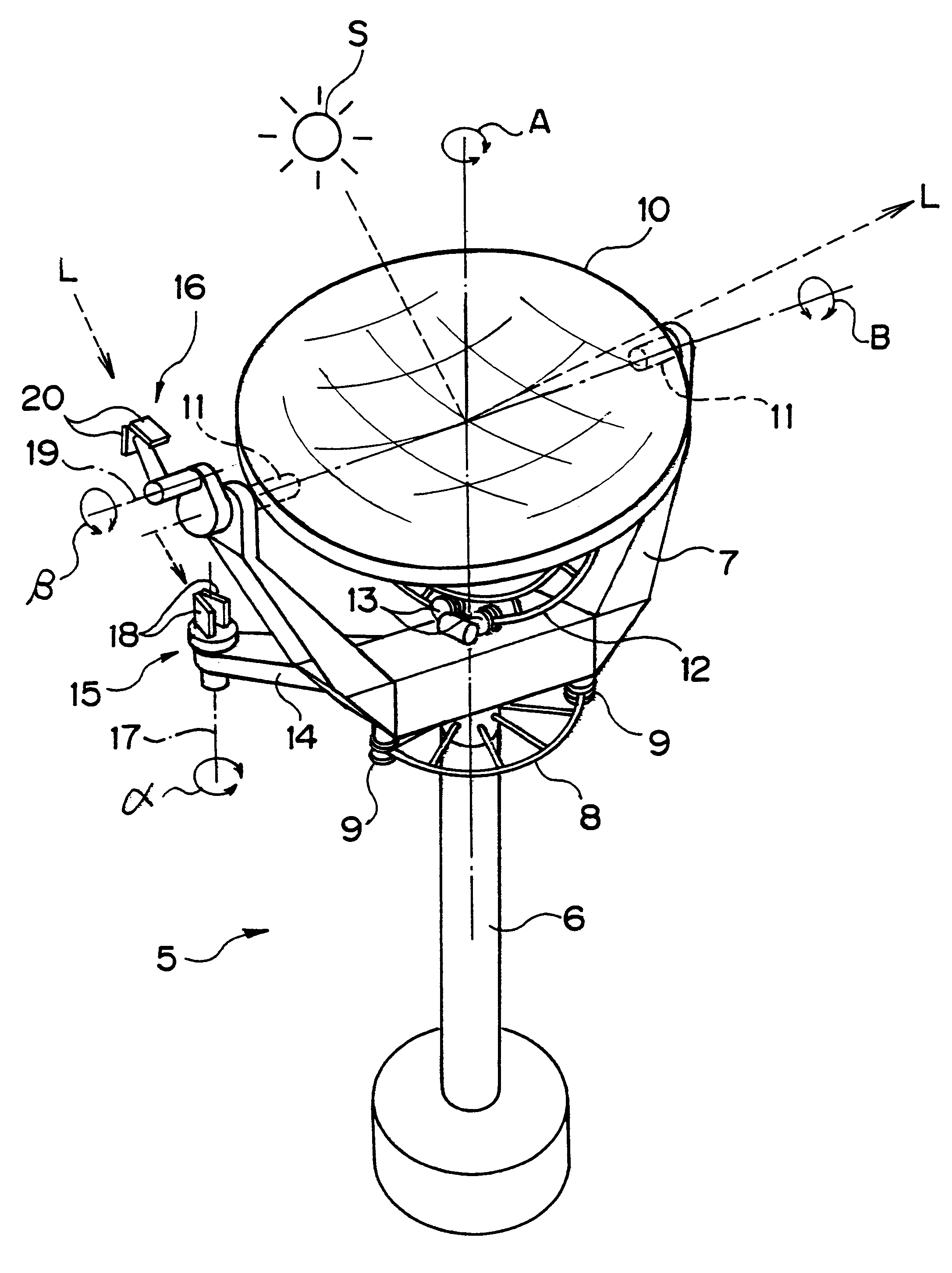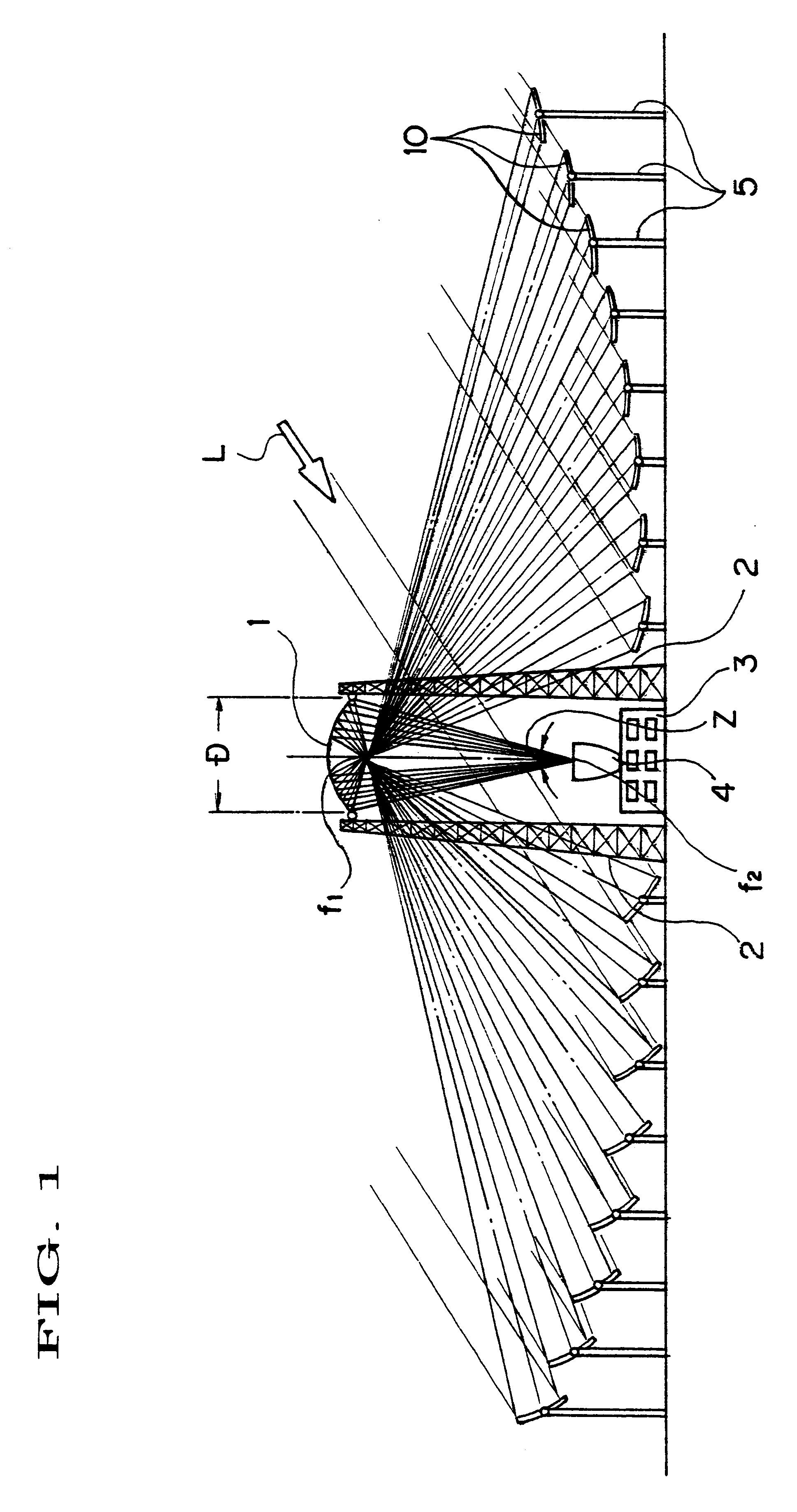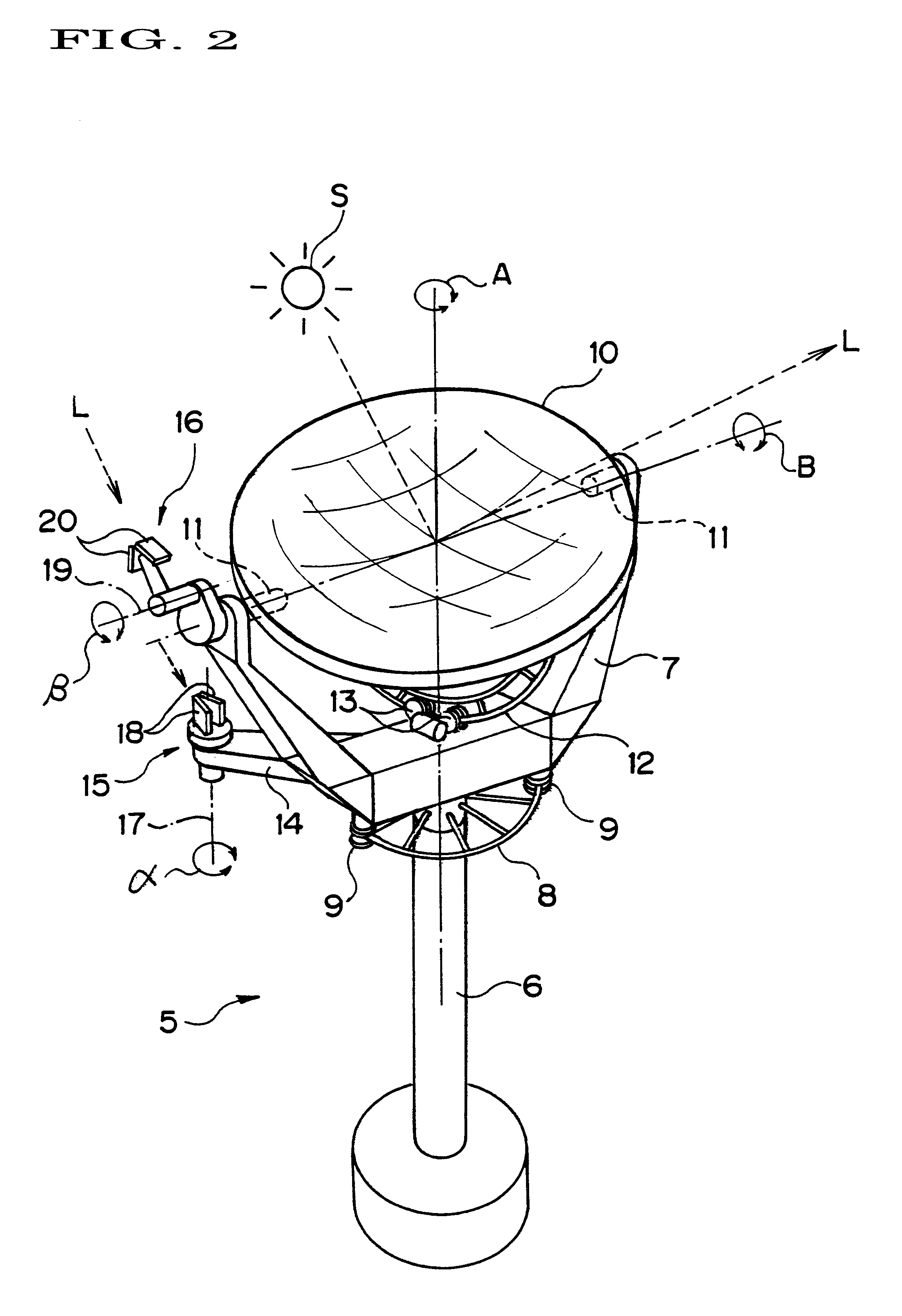Heliostat for sunlight collecting system
a technology of sunlight collection and heliostat, which is applied in the direction of heat collector mounting/support, lighting and heating apparatus, instruments, etc., can solve the problems of complex and difficult control, poor performance and cost, and the project has not received good results in performance and cos
- Summary
- Abstract
- Description
- Claims
- Application Information
AI Technical Summary
Problems solved by technology
Method used
Image
Examples
Embodiment Construction
A preferred embodiment of the present invention will be described in reference to FIGS. 1 to 4. An oval mirror 1 is installed downwardly at a predetermined height with supporting towers 2. For the oval mirror 1, there exist a first focal point f1 and a second focal point f2 as "light-collecting points" below the oval mirror 1. A heat-exchange facility 3 for converting sunlight L into thermal energy is built below the oval mirror 1. On the top of the heat-exchange facility 3, a cylindrical condenser mirror 4 is mounted. A plurality of heliostats 5 are provided on the ground around the heat-exchange facility 3, surrounding the oval mirror 1.
On the top of a column 6 of the heliostat 5, a fork 7 rotatable in an azimuth direction A (See FIG. 2) is mounted. An annular link 8 is provided about the column 6. On an opposite position across the column 6 of the fork 7, a pair of upper and lower rotary pulleys 9 are provided in the downward direction. Between the pair of upper and lower rotary ...
PUM
 Login to View More
Login to View More Abstract
Description
Claims
Application Information
 Login to View More
Login to View More - R&D
- Intellectual Property
- Life Sciences
- Materials
- Tech Scout
- Unparalleled Data Quality
- Higher Quality Content
- 60% Fewer Hallucinations
Browse by: Latest US Patents, China's latest patents, Technical Efficacy Thesaurus, Application Domain, Technology Topic, Popular Technical Reports.
© 2025 PatSnap. All rights reserved.Legal|Privacy policy|Modern Slavery Act Transparency Statement|Sitemap|About US| Contact US: help@patsnap.com



